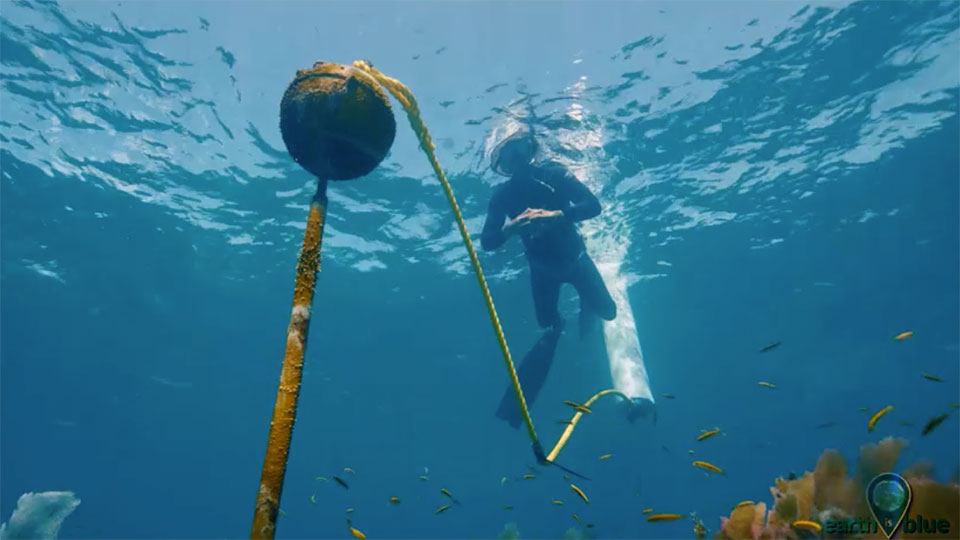Buoy Program
Every year, thousands of boaters enjoy visiting the Florida Keys to fish and dive. Mooring buoys installed and maintained by Florida Keys National Marine Sanctuary make it possible for them to do this safely without damaging the reef. Buoys are also used to mark areas that have specific regulations, assist with navigation, and provide information. The sanctuary maintains more than 800 buoys (mooring, boundary, spar, etc.) throughout 4,539 square miles of sanctuary waters.
Types of Buoys
Mooring Buoys
Mooring buoys—white spherical buoys with a blue stripe, have been used in the Keys since 1981 as an alternative to anchoring, which can break and damage the coral reef. There are more than 600 mooring buoys available for use within the sanctuary on a first-come, first-served basis at no cost to the boater. Anchoring is prohibited on living coral within the sanctuary. If no mooring buoy is available and you are outside a no-anchor zone, you may anchor in sandy areas away from coral and seagrass.

Standard mooring buoys are 18 inches in diameter and can support vessels up to 59 feet in length. These standard-size buoys are available throughout the sanctuary. Larger 24-inch mooring buoys are for vessels between 60 to 100 feet in length and are available at the following locations:
- Looe Key SPA
- Turtle Rocks SPA
- North Patch
- USCGC Bibb
- USCGC Duane
- USS Spiegel Grove
- USS Vandenberg

How to Use a Mooring Buoy
Proper use of a mooring buoy will keep boaters safe and increase the buoy's lifespan and usage.

Mooring Buoy Locations
As many as 40 buoys can be found in some mooring fields, accommodating both large and small boats.
Boundary Buoys
Other buoys are used for marking the boundaries of zones such as sanctuary preservation areas, conservation areas, and restoration areas. These buoys are yellow and have a 30-inch diameter. There are no mooring lines on these yellow buoys and vessels are not permitted to tie up to them.

Spar Buoys
Spar buoys are tall, cylindrical, white buoys marked with orange symbols. Within the sanctuary, they serve important purposes such as:
- Providing directions and general information
- Warning of hazards or underwater obstructions
- Marking no motor zones
- Indicating public access restrictions
Keep an eye out for spar buoys while exploring the sanctuary. They help identify wildlife management areas and guide visitors along the Shipwreck Trail, making it easier to explore safely while safeguarding sensitive resources.

Learn More About Buoys and The Buoy Team

How We Recycle Plastic Waste
Maintaining the buoy network produces hundreds of pounds of plastic waste each year. Check out this video that explains how we reduce our impact to the environment.

Buoyed by the Mission: The People and Work Behind Your Florida Keys Mooring Buoys
Learn more about a day in the life of a Florida Keys National Marine Sanctuary Buoy Team Member.

Buoys Support Recreation in National Marine Sanctuaries
Learn the history of the national marine sanctuaries buoy system.

Florida Keys Mooring Buoy Team
Meet the Florida Keys buoy team: the people who maintain the sanctuary's vast collection of buoys.
If you find a lost buoy or notice one missing
If you notice a damaged or missing line, or to report a missing or a found buoy, please call the appropriate sanctuary office.
From Key Largo to Marathon, call 305-852-7717 or email keylargobuoy@noaa.gov.
For Marathon through Key West and the Tortugas, call 305-809-4700 or email keywestbuoy@noaa.gov.

